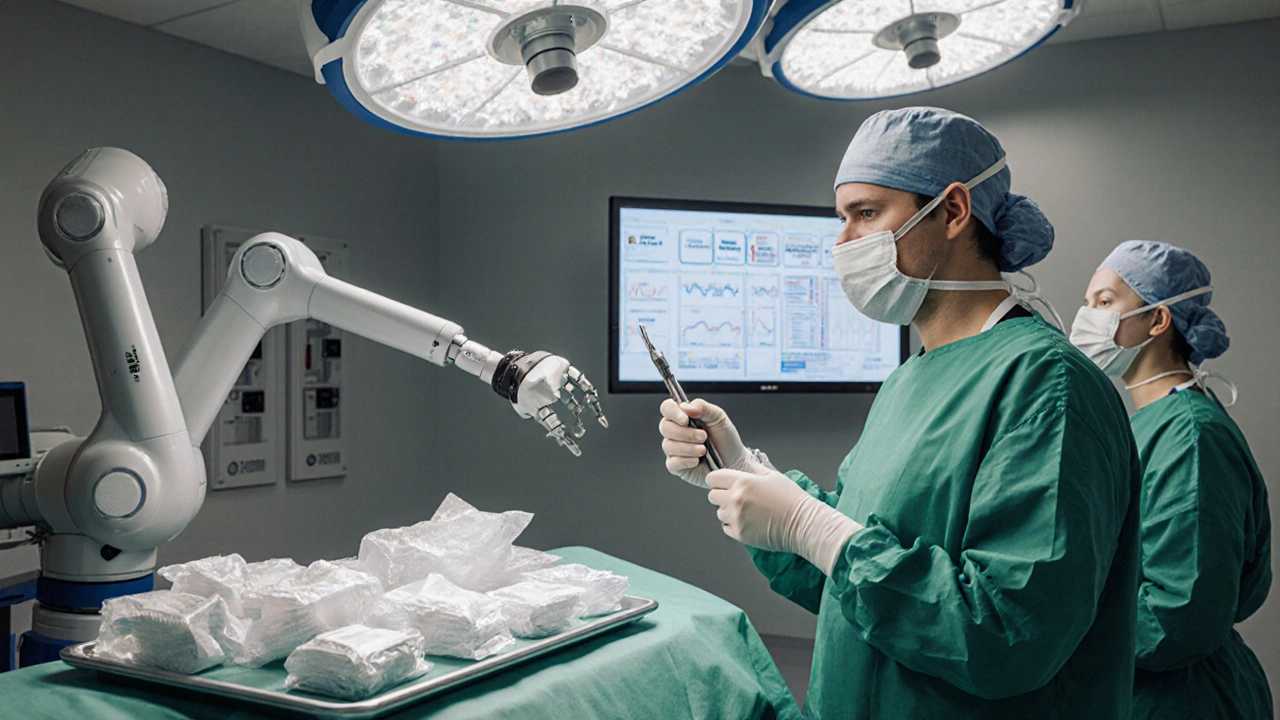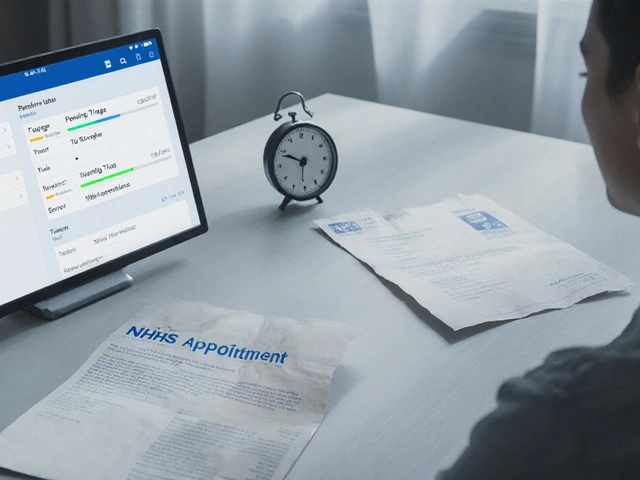Surgery Cost Estimator
Estimated Surgical Procedure Cost
Adjust the sliders below to estimate the total cost of a surgical procedure based on common cost components.
Cost Breakdown
Medical surgery is a complex, invasive procedure designed to treat or correct health conditions that often carries a hefty price tag. When a patient receives a bill that seems to defy logic, the first reaction is usually shock - and a healthy dose of confusion. This article unpacks the hidden factors that push the surgery cost skyward, breaks down the line‑item breakdown, and offers practical ways to keep the expense from derailing your health plan.
What Makes Surgery Pricier Than Any Other Medical Service?
Unlike a routine doctor’s visit, a surgical encounter involves a cascade of specialized resources. Think of a symphony where every instrument - from the surgeon’s scalpel to the hospital’s power grid - must be perfectly tuned. If one piece is expensive, the whole performance feels the impact.
- Labor intensity: Highly trained surgeons, anesthesiologists, nurses, and support staff command premium wages.
- Technology reliance: Advanced imaging, robotic arms, and precision instruments are costly to purchase and maintain.
- Facility overhead: Operating rooms (ORs) are built to sterile, high‑security standards, demanding constant climate control and rigorous cleaning.
- Regulatory compliance: Government mandates on safety, reporting, and waste disposal add bureaucracy and fees.
These drivers combine to create a price matrix far steeper than most outpatient services.
Breaking Down the Surgical Bill: Major Cost Components
To see where the money goes, let’s examine a typical surgical invoice. The figures vary by country, procedure, and provider, but the proportionate split stays relatively consistent.
| Component | Average Share of Total Cost | Key Drivers |
|---|---|---|
| Surgeon Fees | 30% | Experience level, specialty, regional demand |
| Anesthesia Services | 15% | Duration of procedure, monitoring equipment |
| Operating Room Time | 20% | Hourly OR rates, staffing, equipment use |
| Medical Devices & Supplies | 12% | Implants, staplers, disposable kits |
| Hospital Overhead | 13% | Facility maintenance, utilities, admin |
| Pharmaceuticals | 5% | Pain meds, antibiotics, postoperative drugs |
| Post‑operative Care | 5% | Recovery room, monitoring, follow‑up visits |
Each line item reflects a distinct entity in the healthcare ecosystem.

Key Players and Their Economic Impact
Below are the primary entities that collectively shape the final number you see.
Hospital is a large, licensed institution that provides inpatient and outpatient services, including surgical suites. Its overhead includes real estate, utilities, and a whole staff of support personnel.
Surgeon is a physician specially trained to perform operations, often holding board certification in a specific specialty. Their fees reflect years of education, malpractice insurance, and limited supply.
Anesthesiologist is a medical doctor who administers anesthesia and monitors vital signs throughout the procedure. Their presence is mandatory for patient safety, adding a substantial hourly rate.
Operating Room is a sterile environment equipped with lighting, ventilation, and specialized equipment where surgeries are performed. OR time is billed per minute, and idle minutes still incur costs.
Medical Equipment is a high‑tech devices such as robotic arms, imaging scanners, and monitoring systems used during surgery. Depreciation, maintenance contracts, and upgrades push prices up.
Pharmaceuticals is a drugs administered before, during, and after surgery for anesthesia, pain control, and infection prevention. Brand-name formulations can be dramatically pricier than generics.
Health Insurance is a contractual arrangement where insurers reimburse a portion of medical costs in exchange for premiums. Coverage limits, co‑pays, and network restrictions influence out‑of‑pocket amounts.
Why Private Surgery Costs More Than Public Options
Public hospitals, especially those funded by national health services, often subsidize many of the line items listed above. Private facilities, however, operate on a for‑profit model and tend to:
- Charge market‑rate surgeon salaries instead of standardized public scales.
- Invest heavily in cutting‑edge technology to attract affluent patients.
- Provide premium amenities such as private rooms and concierge services, which are billed separately.
The result is a noticeable gap in pricing. In the UK, a routine knee replacement can cost the NHS around £8,000, while a private counterpart might exceed £15,000.
Ways to Lower Your Surgical Expense
Even if you need a complex operation, there are strategies to keep the bill manageable.
- Shop for surgeon fees: Some surgeons offer a flat‑rate package for specific procedures. Request a detailed quote before committing.
- Verify insurance coverage: Confirm that your policy classifies the surgery as medically necessary and that the provider is in‑network.
- Consider academic medical centers: Teaching hospitals often run clinical trials that provide surgery at reduced cost in exchange for participation.
- Ask about generic pharmaceuticals: Insist on using non‑brand medication when possible; the savings can be significant.
- Negotiate post‑operative care: Physical therapy and follow‑up visits can be bundled or shifted to outpatient clinics with lower fees.
- Explore financial assistance: Many hospitals have charity care programs that waive a portion of the bill based on income.
Being proactive and transparent with your provider can shave tens of thousands off an otherwise daunting invoice.

The Role of Government Regulations and Market Forces
Regulators aim to protect patients, but their rules also add cost layers.
Regulatory Compliance is a set of legal standards that hospitals and clinics must meet, covering safety, reporting, and environmental disposal. Meeting these standards requires staff training, documentation systems, and sometimes expensive upgrades.
At the same time, market competition influences pricing. In regions with multiple high‑volume surgical centers, price transparency initiatives push hospitals to publish their fees, encouraging patients to shop around. Conversely, in rural areas where a single provider dominates, lack of alternatives can keep prices inflated.
Future Trends: Will Surgery Become More Affordable?
Several emerging trends could reshape the cost landscape.
- Tele‑pre‑op consultations: Reducing in‑person visits cuts administrative overhead.
- 3‑D‑printed implants: Custom devices manufactured on demand may lower material costs.
- Artificial intelligence assistance: AI can streamline surgical planning, potentially shortening OR time.
- Value‑based reimbursement: Payers are shifting from fee‑for‑service to outcomes‑based models, rewarding efficiency.
If these innovations scale, patients could see a gradual dip in the headline numbers, though the transition will take years.
Frequently Asked Questions
Why does a simple appendectomy cost more than a basic doctor’s visit?
An appendectomy involves a surgeon, anesthesiologist, operating room time, sterile supplies, and postoperative monitoring. Each of these resources carries its own charge, whereas a routine visit only requires a clinician’s time and minimal overhead.
Can I negotiate the price of surgery?
Yes. Many hospitals and surgeons provide itemized estimates and are willing to discuss bundled pricing or discounts, especially for self‑pay patients. Start the conversation early and get any agreement in writing.
Do insurance plans cover all surgical costs?
Coverage varies. Most plans pay for medically necessary surgeries performed by in‑network providers, but they often leave co‑pays, deductibles, and non‑covered items such as certain implants or private rooms to the patient.
How much does an operating room actually cost per hour?
In the United States, hourly OR rates can range from $1,500 to $5,000 depending on location, technology used, and staffing levels. In the UK, public hospitals absorb most of this cost, while private facilities may charge a similar range in pounds.
Are robotic surgeries more expensive than traditional ones?
Robotic platforms have high acquisition and maintenance costs, which are often passed on to patients. However, they can reduce hospital stays and complication rates, potentially offsetting the upfront expense in some cases.




